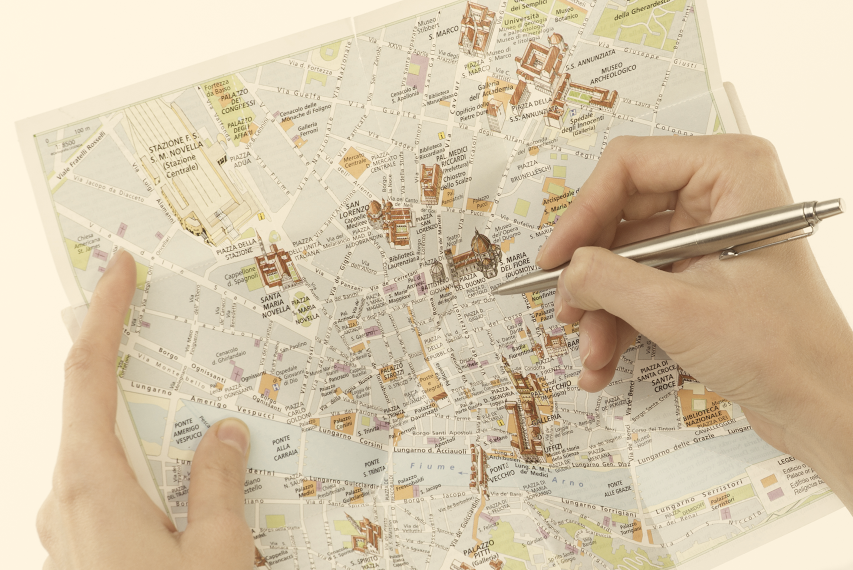Imagine navigating any individual city based on an average map of several cities, it is not so different with the brain.
You don’t need me to tell you that the most unique aspect of you is your mind. How often have you wondered if anyone can truly understand you? Consider; we are relatively unsurprised at the existence of look-alikes, whether twins or not—amusing, but hardly miraculous. But what about someone who thinks and feels exactly like you? We don’t expect that even of clones (see the new television show Orphan Black for a cogent dramatization). Strangely though, we don’t tend to think of this individuality in terms of differences between brains—as if we’re still in the age of Descartes’ mind-body dualism and the incorporeal soul. If you have a problem with your heart you’ll directly consult a heart-specialist, but if you have a problem with how you think or feel, you’ll see a psychiatrist long before you consult a neuroscientist!
Not that you or most people would deny that minds belong in some way to brains; but we seem to think of the individuality of the ‘software’ as relatively independent of the ‘hardware,’ an error perhaps encouraged by the popularity of the computer metaphor for the mind, which is, frankly, not very apt. The mind is not a program; it’s a self-organizing pattern of electro-chemical activity rippling through an ever-changing neural network; it’s not generated by instructions and it’s not, at the bottom, symbolic.
And perhaps the most important difference between your brain and a computer: it’s always changing. Long-term cognitive habits, such as a love for 60’s rhythm and blues, or practicing yoga, for example, certainly re-shape the neural network of your brain and its patterns of activity.
Neuroscience has long understood differences between brains in terms of contrasts with an ‘average’ or ‘normal’ brain—but this normal brain has probably never been observed. The almost universal methodology of neuroscientific brain-scan studies is to take the images of all the subjects’ brains and average them to find the normal brain. The problem is that these portraits of average brains correspond to no brain at all1. We might compare this practice to understanding a city by averaging the maps of thirty different urban areas. All cities must have sections performing more or less the same functions but there are many ways for a city to do so, each adapted to its unique history and environment. Sure, the sewers are always at the bottom (like brain stems) and Main street somewhere in the middle, but the newspaper offices could be just about anywhere, and some cities have more than others. We have been learning for some time that the brain is like this, or at least the “higher brain” or cortex – from where your personality and most of your abilities emerge. A doctor using a map of the ‘average’ brain to navigate your brain might become well and truly lost. This is why patients are required to be awake during some forms of brain surgery, so that surgeons can poke and prod the brains of their patients and get verbal responses, just to find out where they are!
The biggest fault in my city analogy is that most cities change a lot more slowly than brains. In other words, averaging brains could even be less applicable to individual cases than the city-map analog. Although brains do have more-or-less universal large-scale structures, we now know that they are so adaptable that even areas as seemingly single-purpose as the “visual cortex” can be used for other functions, as apparently happens in the brains of the blind. Musicians, polyglots, and athletes also develop brain-differences that serve the heavy demands of their skills. As do psychopaths.
In other words, everything that is unique about you must be reflected by the uniqueness of your brain, whether in structure or activity. The sort of differences I’ve mentioned are just a few of the most obvious. As we can all know just by looking inside ourselves, there are enough subtle dimensions of ability and personality to guarantee that you will never meet your true mind-clone!
1 “Brain Individuality,” Laboratory for the Science of the Individual, Harvard Graduate School of Education, Harvard University. http://lsi.gse.harvard.edu/brain-individuality
Dr. Aaron Nitzkin has a PhD in Cognitive Linguistics and an interest in cognitive science and the philosophy of mind.

















I tend to agree with most of it, although the methaphor of the neuroplastic brain is somewhat overcharged given the poor recovery rate in adults with traumatic brain damage